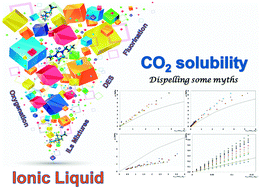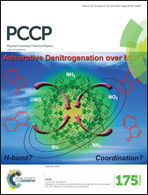Dispelling some myths about the CO2 solubility in ionic liquids
Abstract
Ionic liquids have been objects of extensive research for physical sorption of CO2 and a number of myths have been perpetuated in the literature, for lack of a critical analysis, concerning their potential for CO2 capture. This study carries a critical analysis of a number of widely accepted ideas and others not so well accepted that have been repeatedly expressed in the literature concerning the CO2 physical sorption in ionic liquids. Using the CO2 solubility in eicosane as benchmark, it will be shown that there is no evidence that ILs display a physical sorption of CO2 larger than n-alkanes when analyzed in adequate concentration units; the fluorination of the ions has no impact on the CO2 solubility and the oxygenation will marginally contribute to a decrease of the solubility. Ionic liquid-based deep eutectic systems are also shown to have a poor CO2 solubility. Although these widely used approaches to physically enhance the CO2 solubility in ILs do not seem to have any positive influence, this does not mean that other types of interaction cannot provide enhanced CO2 solubility as in the case of the anion [B(CN)4] confirmed here by a critical analysis of the published data. The mechanism of CO2 physical sorption in ionic liquids is discussed based on the results analyzed, supported by spectroscopic measurements and molecular simulations previously reported and further suggestions of possibilities for enhanced physical sorption based on fluorinated aromatic rings, other cyano based anions, mixtures with other ILs or solvents or the use of porous liquids are proposed.

- This article is part of the themed collection: PCCP Perspectives


 Please wait while we load your content...
Please wait while we load your content...